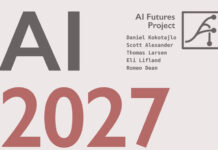With Capacity Building MOOCs, It’s About Social ROI: Philanthropy University’s Connor Diemand-Yauman in Conversation
Henry Kronk | IBL News
Online education is often billed as a means to open up avenues of learning to people and communities around the world who lack it. More often than not, however, online enrollments are filled by members of the developed world. That is not the case with Philanthropy University. The organization’s MOOCs, which focus on capacity building in the global south, have counted 75,000 enrollees from over 180 different countries in the last year. IBL News got in touch with CEO Connor Diemand-Yauman to learn more about the benefits and challenges of applying online learning to capacity building.
Henry Kronk: When many people hear about MOOCs on Coursera, edX, FutureLearn or other platforms, they think North American or European professionals upskilling to get a raise or a better job. From what I know about Philanthropy U MOOCs, that’s not the case. Could you tell me a little about the target demographic or Philanthropy U MOOCs and what skills they impart?
Connor Diemand-Yauman: Broadly speaking, we are focused on supporting the crucial, local layer of development. The local actors who are on the ground, solving challenges that they often have experienced themselves for the communities they are a part of. We see a particular opportunity to not only serve the local layer and these local actors world-wide but particularly in the global south. There is an incredible amount of crucial work that’s going on in the global south in the development sector. The success of these initiatives so often are attributed to local organizations’ on-the-ground work.
If you look at them, if you trace the social supply chain, the local layer is often the foundational piece of that work. So we’re serving typically non-profit social enterprise leaders that are in smaller, more nascent, locally led organizations.
To make it a little more concrete, one of our users is Dawn Brochenin. She opened up a preschool in an Eastern Cape village, citing that there weren’t any preschool or early childhood education services within a 50 km radius. When Dawn diagnosed this problem in her community, she stepped up and formed a local preschool called Ncinci One Montessori and started supporting 14 local children. Within 6 months, this grew to 30 children and she continued to meet this pressing local need. But Dawn, like so many of these local actors, hit constraints in her capacity. Her challenge wasn’t knowing what to do, but rater, how to do it better. In order for her to effectively grow her organization’s impact, she had to effectively grow her skills.
With Philanthropy University, Dawn had the opportunity to take free online courses in measurement evaluation, project management, and fundraising. Through our platform, not only did she build these competencies, not only did she gain crucial skills that local leaders need, but she was also able to raise $6,000 in local crowdfunding that was enabled by our platform ecosystem of partners and resources.
These are the types of users that we are so excited to serve. These users and these organizations have proven time and time again to be more effective and more enduring than their non-local counterparts, and they’re so often neglected in terms of their capacity building needs. So everything we do is focused on serving that local layer and those leaders like Dawn.
Henry Kronk: Building MOOCs and fostering capacity building are two distinct efforts. How did the idea emerge to combine them at Philanthropy U?
Connor Diemand-Yauman: So what do we mean by capacity building? The term has been around for a while, but, when you say it, it can mean totally different things to different people. When we say capacity building, we’re referring to an increase in the knowledge, output, management, skills, and other capabilities of an organization. It’s about the non-profit’s ability to deliver its mission more effectively. There are a lot of different forms that capacity building can take, but that is what we’re focused on.
When you look at the history of capacity building and you understand broadly the landscape of different initiatives, it leads you pretty quickly to a lot of opportunity around more scalable education models, namely, MOOCs. So capacity building historically has been very high-touch and very high-cost. Specifically, the high cost is a high variable cost, meaning that every single individual you want to serve incurs an incremental cost to the provider. And this is typically in the form of individual experts being sent to work with NGOs on site for days or weeks.
This works, but the problem is very few organizations actually get this white glove, high-touch support. In addition to that, we saw that the sector as a whole was very fragmented and siloed in their various approaches to capacity building. You would have dozens, even hundreds of organizations that would be teaching their own project management course or their own measurement and evaluation course to local actors. We saw significant inefficiencies at the sector level with this approach. So we thought, instead of creating dozens of siloed courses that were only available in these isolated encounters, let’s scale those to the world. What if, instead of creating dozens of static management courses, we created the highest quality course that could be accessible to anyone and would continuously be updated in response to feedback and needs? And what if we allowed different providers to not have to worry about reinventing the wheel and instead layer on additional supports when needed to an engaging, robust technology platform? All of these realizations led us to pursue a more scalable, technology-driven capacity building approach. And with our approach, we have gone in the other direction of the high variable cost. We have invested in significant fixed costs of standing up our platform and creating these courses, but have incurred minuscule variable costs, which allows us to serve organizations at scale.
At the end of the day, when you think about Philanthropy University’s value to the sector, it’s about ROI. It’s about social ROI. We, as a society, invest billions of dollars in the development sector. By building the capacity of these organizations, we are building the ROI of that social investment. We are ensuring the money that goes into these organizations is better spent.
Henry Kronk: You and Philanthropy University recently attended the World Economic Forum in Davos, Switzerland. In a LinkedIn post reflecting on the experience, you wrote: “We also had an intriguing conversation about new frontiers in capacity building and learning, chief among them artificial intelligence and machine learning. One participant remarked on the incredible talent and innovation concentrated within the largest technology firms, and the potential to direct this innovation toward learning and program development.”
Could you flesh this idea out a little more and tell me what opportunities you see that could bring enhance learning and program development with AI?
Connor Diemand-Yauman: I think the technology sector can often get very excited about the application of new technologies in ways that are often not grounded in reality or productive. I think there can be a lot of hubris in the tech sector around the opportunities and difficulties that local leaders face every day. You hear this trope often of Silicon Valley’s ability to transform development by ensuring that people can access everything they need through an app or that you can upskill every man, woman, and child by giving them a tablet. While these technologies can be instrumental tools and accelerants in our broader efforts to support the actors on the ground, it’s myopic to think that technology alone is what’s needed to give them the support that they require.
With that said, I think there is tremendous opportunity to leverage technology to support this segment. With AI and machine learning, I think it comes down to, ‘how are we leveraging these innovations to better analyze, understand, and act upon the data that we’re collecting from our learners?’ We collect a tremendous amount of data about our users: what they’re learning, what they’re saying to one another, what they need, where they’re hitting pain points or blockers. AI presents a tremendous opportunity for us to continuously analyze these data in actionable ways in the service of the end user. How can we use these data to generate more tailored learning opportunities? How can we use these data to glean trends in the sector that key stakeholders need to be aware of? I think these are some of the most immediate and practical applications of AI.
There is this holy grail of adaptive learning. But it is very complex. I think that true 100% adaptive learning modalities are further off than people think.
Henry Kronk: In a lot of regions, especially in the global south, streaming an hour-long video might cost as much as a meal. What are some of the data infrastructure problems you run into delivering synchronous MOOCs to developing communities?
Connor Diemand-Yauman: From the beginning, when we decided to orient our work around social change makers in the global south, we knew we needed to make a product that was optimized for accessibility. We knew that our users would be dealing with a unique set of challenges that we would have to work around. I bucket how we have addressed this issue of accessibility into three different buckets.
First, we prioritized building a responsive web app, which allows us to deliver a learning experience to anyone on any device. This is really important considering the diversity of technology used across countries in our learner base. You need to be able to flex and adjust based on any number of different devices being used. So having a responsive web app has been very valuable in that sense.
Second, we designed an Android mobile app that was designed to be an extension of the desktop app. This Android app allows users to download course materials when they have access to Wi-Fi and then consume that content on the go. One thing that we found in our user research was that, while most of our users are consuming content on mobile devices, and therefore often using limited data, the majority also have access to Wi-Fi at different points throughout the day that they can use.
Finally, we have designed the courses themselves to be lightweight, meaning that not much bandwidth is needed in order to view or engage with the content. We’re also in the process of experimenting with ultra lightweight content, which has most of the video and interactive elements stripped out. We’re starting with the absolute bare bones to maximize the opportunities for consumption.
And then there are other things we have done for data infrastructure. For example, we run all of our servers through AWS in Europe. That allows us to be closer to our users. I would say that the main data challenges we’re facing right now are around analysis. We’re in the process of rearchitecting our infrastructure in order to create a data warehouse. This change will decrease the level of effort needed for internal reporting and allow us to spend more time answering important questions about how best to serve our learners. We’re in the process of making greater investments in that infrastructure to ultimately free up more resources to serve our learners on the ground.
Philanthropy University is involved in numerous capacity building efforts outside of online courses. One can learn more at their website.

 En Español
En Español




















